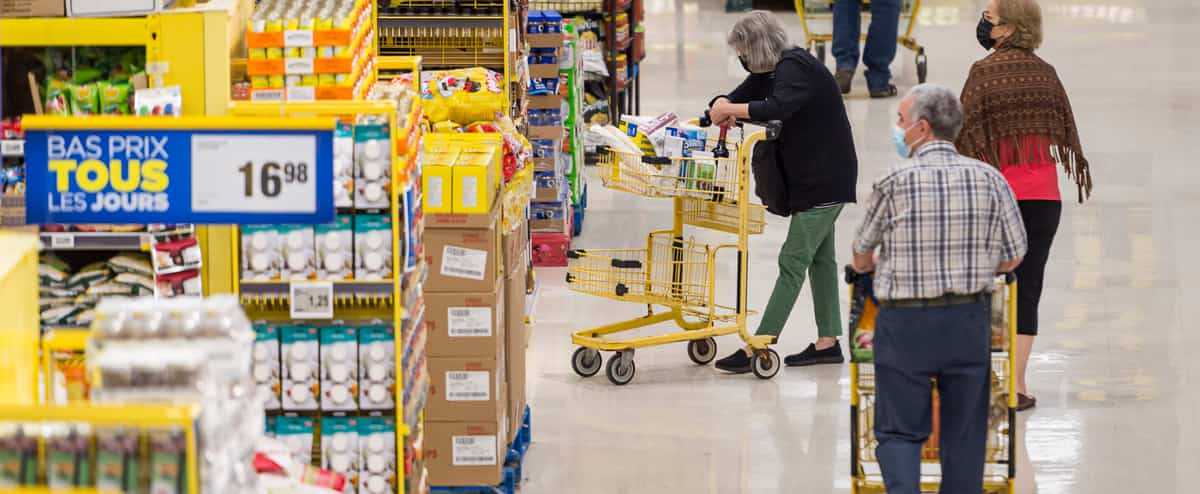If the typical Quebec family was already thinking about spending a fortune at the grocery store, think again. The bill will be even higher next year with a jump of $700.
• Read also: Metro and Loblaw fill their coffers with food inflation
• Read also: Quebecers have managed to beat food inflation, says Metro boss
• Read also: The impoverishment of Quebec households continues
The 2024 food budget will increase to $16,300 in a house where a couple and their two children live, it is calculated in the 14e report on food prices in Canada.
“The year 2023 was really violent for the wallets of Quebecers. It will be easier in 2024, inflation will be much lower,” says Sylvain Charlebois, being reassuring.
He is one of 30 authors of the report released Thursday. Expected every year, the document is the result of the collaboration of four Canadian universities: Dalhousie, Guelph, Saskatchewan and UBC.
- Listen to Yves Daoust’s economic segment via
:
The increase will still be 5% to 7% for meat, vegetables and bakery products, the researchers calculate.
For example, a 55-year-old woman who lives alone will spend $3,664 on food in 2024, compared to $3,506 this year.
The bill will be $4,656 for a single boy aged 14 to 18, the highest cost of all the demographics studied. It was $4456 in 2023.

Too expensive
The researchers predicted that the typical family would already spend $16,300 in 2023. They were wrong: the food budget was instead $15,595.
“They bought less food because it cost more,” observes the report’s project manager.
Quebecers abandoned more expensive brands in favor of private brands, they bought frozen foods instead of fresh foods, they went to Giant Tiger or Dollarama, he says.
In short, they made concessions. The proof of these changes, argues Sylvain Charlebois, is the conversion in 2023 of around fifty Provigo and Metro into Maxi and Super C, bargain stores.
Retail sales of food and beverages also fell by 3.26% from 2022 to 2023. “The world is struggling. The population is increasing, but sales are decreasing,” he says.
Price war in sight
Sylvain Charlebois remains optimistic in the face of this dark portrait. It expects the rise in food prices to be 2% to 2.5% in 2024, while the report predicts a jump of 2.5% to 4.5%.
His crystal ball shows that “the price of the grocery basket will increase, but there will be more opportunities to save.”
Grocers will battle Walmart and Costco, he thinks, thanks to their investments in their distribution centers, like Metro in Terrebonne.
This price war will take place in the center of the grocery store, in the aisles where the pasta, sauces, flour and coffee are located.
“Loblaw, Sobeys and Metro will have more room to maneuver. They will fight to attract people to the store,” summarizes the Dalhousie University researcher.
The coming year will not be easy, however. Quebecers, already impoverished by sharp increases in interest rates, will continue to suffer from rising housing and energy costs, among other expenses.
Methodology : The 14th edition of the Canadian Food Prices Report leverages predictive analytics models, including machine learning, to improve the analytical process of projecting future food prices. The methodology used for this year’s report combines techniques from the previous edition with the introduction of the vector autoregressive gap model and the application of Monte Carlo simulations.


